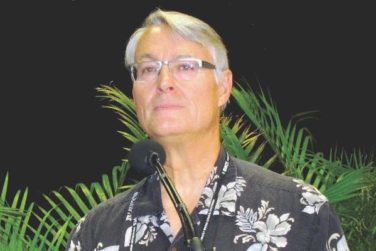EXPERT ANALYSIS FROM THE IASLC WORLD CONFERENCE
DENVER (FRONTLINE MEDICAL NEWS) – In its third CT Screening Workshop, the Strategic Screening Advisory Committee of the International Association for the Study of Lung Cancer discussed the finer points of using this technology to screen for lung cancer, including issues such as metrics, quality control, and cost-effectiveness.
“Lung cancer is the major problem of all cancers,” committee chair Dr. John K. Field maintained in press conference at the annual World Conference on Lung Cancer, which was held in conjunction with the workshop. This cancer still causes more deaths than all of those from breast, colon, and prostate cancer combined.
“However, the good news is that the future does lie in early detection,” he said. The National Lung Screening Trial established that low-dose CT screening reduces the risk of lung cancer death by 20% compared with plain chest radiographic screening (N Engl J Med. 2011;365:395-409).
“That was the first time anybody had actually demonstrated such a mortality advantage with anything in lung cancer, so it led to an enormous stage shift in our thinking,” noted Dr. Field, who is also Personal Clinical Chair in Molecular Oncology at the University of Liverpool, England.
In the workshop, committee members reviewed new guidelines on managing screen-detected nodules from the ongoing NELSON (Dutch Belgian Randomised Lung Cancer Screening Trial) ( Lancet Oncol. 2014;15:1332-41 ) and from the British Thoracic Society ( Thorax. 2015;70:794-8 ). Main results from NELSON, as well as from the similar U.K. Lung Cancer Screening Trial, are expected shortly.
“We also looked at quality control for future screening programs. It’s extremely important that if we do have screening in place, that we have the necessary quality control behind it,” Dr. Field asserted.
Another topic discussed was whether CT screening is cost-effective. “Cost-effectiveness is going to be a major issue, especially in Europe,” where policy makers are awaiting results from the two trials before implementing screening, he said. “At this moment in time, it looks as though we will be cost-effective.”
The committee also assessed the potential of lung cancer biomarkers. “If we can actually improve the CT screening by using a particular biomarker, that would help us identify individuals easier. But also, once we undertake the CT, we are sometimes left with a gray situation of nodules that may become malignant but are not large enough to actually undertake any surgical intervention. And if we had a biomarker that would tell us if it was an aggressive tumor, that would be an enormous advantage,” Dr. Field elaborated.
Finally, the committee reviewed the status of national plans for implementing lung cancer CT screening around the world. Implementation is a multistep process requiring clinical experts and policy makers to hammer out a variety of issues, he noted ( Lancet. 2013;382:732-41 ).
These issues include how best to identify individuals at high risk, typically accomplished with the LLP (Liverpool Lung Project) risk model in the United Kingdom and the PLCO (Prostate, Lung, Colorectal, and Ovarian) risk model in the United States. Screening age must also be considered. “In the U.K., our recommendation would probably be 60-75, but in the U.S. it would be 55-80, which came from the U.S. Preventive Services Task Force,” Dr. Field noted.
Another issue is whether nodules identified on CT are better measured by their maximal diameter (used in the National Lung Screening Trial) or their volume (used in the ongoing NELSON and U.K. trials). “There are advantages and disadvantages of both. We feel that volume is the way forward,” he said.
The nature of any subsequent work-up, including whether a biopsy is performed and additional tests, is also a consideration, as is the management of small nodules, including whether patients should undergo video-assisted thoracoscopic surgery.
Similarly, clinical experts and policy makers must decide on the optimal screening interval, whether every year or every 2 years, as well as the age at which to stop screening, he noted. And cost-effectiveness will be a critical point.
Workshop attendees from around the world shared current screening practices in their countries. “It’s quite clear that we all have different approaches, but we all have one objective: to identify high-risk individuals early. And we know if we identify them early, successful surgery will actually give them a long life,” Dr. Field said.
“Therefore, we feel that the future is through screening and we need to implement it. At this moment in time, the funding is there within the U.S., we are moving towards implementing it. In Europe, we are still waiting for the NELSON trial, but we are looking at an 18-month or 2-year period where that decision hopefully will be made,” he concluded.
Dr. Field disclosed no relevant conflicts of interest.




